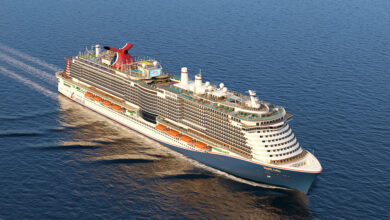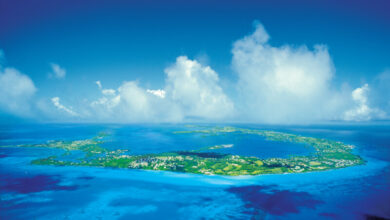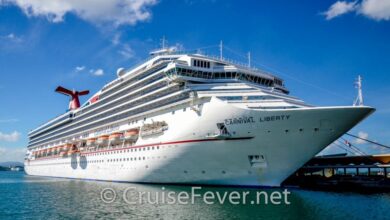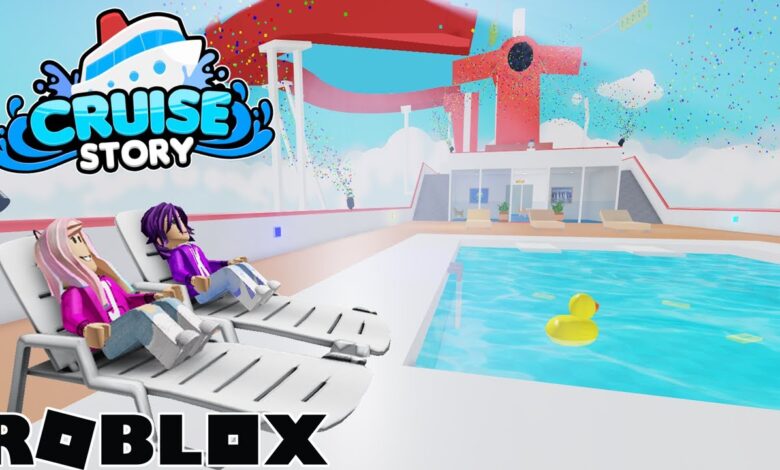
A Tale of Two Cruise Lines Royal vs. Norwegian
A tale of two cruise lines, Royal Caribbean and Norwegian Cruise Line, unfolds in this exploration of their contrasting worlds. From their vastly different fleets to their unique onboard experiences, these two titans of the cruise industry offer vastly different voyages. This in-depth comparison dives into their pricing, amenities, destinations, and customer feedback to reveal which cruise line best suits your needs.
We’ll uncover the key features that set them apart, exploring everything from the thrill-seeking atmosphere of Norwegian to the family-friendly focus of Royal Caribbean. We’ll dissect their value propositions, comparing itineraries, onboard entertainment, and even their environmental impact. Prepare for a deep dive into the world of cruising, as we unveil the truth behind these two major players.
Introduction to Cruise Lines
The cruise industry is a vibrant global travel sector, offering unique experiences combining vacationing, exploration, and entertainment. It has evolved significantly over the decades, catering to diverse needs and preferences. From luxurious getaways to budget-friendly family adventures, there’s a cruise line to suit nearly every taste and budget.The industry has become increasingly sophisticated, with cruise lines constantly innovating to enhance the onboard experience and destinations.
This evolution reflects the ever-changing desires of travelers, who now seek personalized experiences and curated travel options.
Cruise Line Categories
Various categories of cruise lines cater to different needs. Understanding these distinctions is crucial for selecting the right vessel for your vacation. Luxury cruise lines offer unparalleled amenities, fine dining, and personalized service, typically with smaller ships and higher pricing. Budget-friendly lines, on the other hand, provide more accessible options with basic amenities, often with larger ships and lower prices.
Family-focused lines are designed to appeal to families, featuring kids’ clubs, family-friendly activities, and entertainment, as well as suitable dining arrangements.
Key Features of Different Cruise Lines
Cruise lines vary significantly in their onboard offerings, reflecting their target market. These variations encompass entertainment, dining, and amenities. Luxury lines emphasize high-end accommodations, Michelin-starred dining experiences, and exceptional service. Family-focused lines typically feature children’s clubs, dedicated family areas, and activities aimed at entertaining all ages. Budget-friendly cruise lines often provide basic amenities and standard dining options, but still provide an enjoyable and affordable vacation.
Factors Influencing Consumer Choices
Numerous factors influence consumers’ decisions when choosing a cruise line. Budget is often the most significant, dictating the selection of a budget-friendly or luxury line. Travel style is also crucial; a family with young children may prioritize a family-focused cruise with extensive onboard activities. Desired destinations and itineraries also play a pivotal role in the decision-making process, as different lines focus on particular regions or offer specific itineraries.
Comparing two cruise lines is always fascinating, especially when one considers the recent reopening of Amsterdam’s De L’Europe. This marks a significant milestone in the industry, as it showcases the resurgence of European river cruising. With the reopening of Amsterdam s De L’Europe reopens , it prompts me to think about the differing approaches of various cruise lines, and how they’re adapting to the changing needs of travelers.
Ultimately, the tale of two cruise lines remains a story of adaptation and innovation.
Reviews and recommendations from friends, family, and online communities are increasingly influential. Finally, specific onboard amenities and activities can significantly influence a consumer’s choice. Consideration of all these factors helps in finding a cruise that best suits personal needs and expectations.
Historical Context and Evolution of the Cruise Industry
The cruise industry’s history reveals a progression from modest beginnings to a global phenomenon. Early cruises were primarily focused on shorter voyages and wealthy travelers. Over time, innovations in ship design and onboard amenities made cruising more accessible to a wider range of demographics. The expansion of global travel and tourism further propelled the growth of the cruise industry, leading to larger ships, more diverse destinations, and the emergence of different cruise line categories to cater to specific customer needs.
This evolution reflects the ever-increasing demand for travel and leisure experiences, as well as the adaptation of cruise lines to cater to that demand.
Comparing Two Specific Cruise Lines
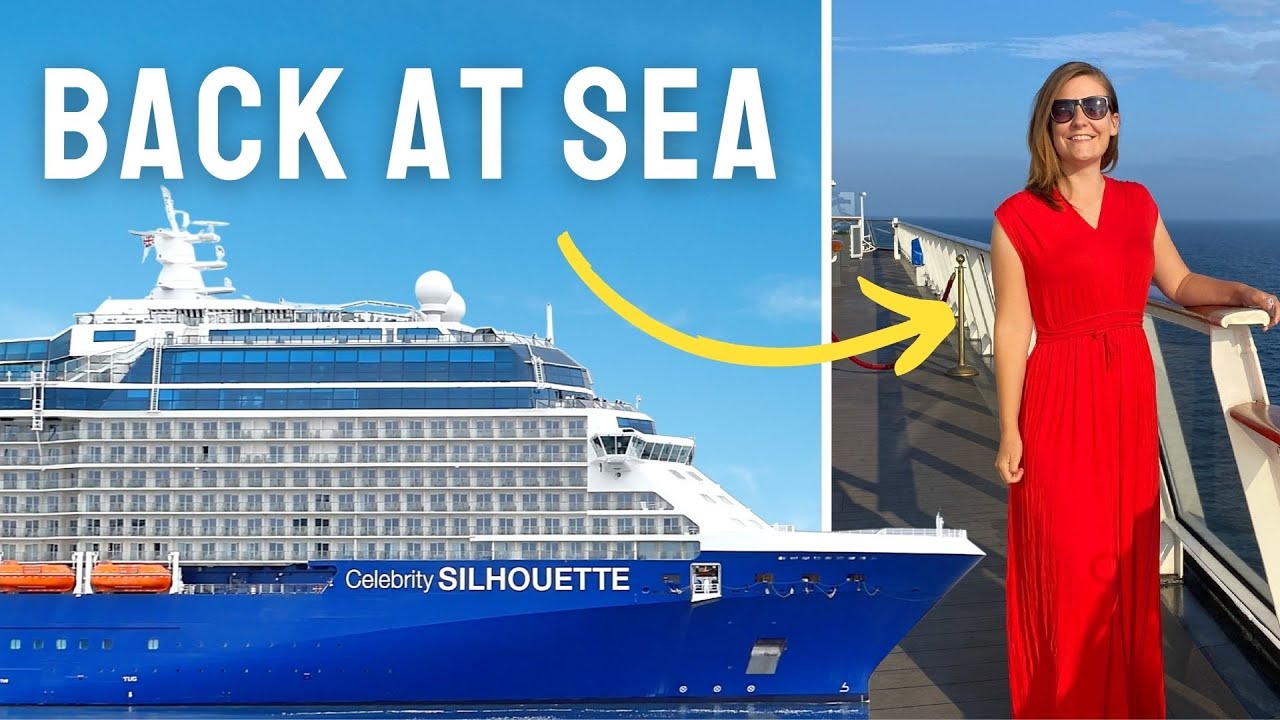
Cruising offers a unique blend of relaxation and exploration, but different cruise lines cater to varying tastes and preferences. This comparison delves into the distinct characteristics of two prominent players: Royal Caribbean and Norwegian Cruise Line, highlighting their fleets, destinations, amenities, and the experiences they provide to different customer segments.These two cruise giants dominate the market, offering diverse itineraries and onboard experiences.
Understanding their strengths and weaknesses allows potential cruisers to make informed choices aligning with their travel styles and budget.
Fleet Sizes and Ship Types
Royal Caribbean and Norwegian Cruise Line maintain substantial fleets, each featuring a range of ship types designed for diverse needs. Royal Caribbean boasts a considerable number of large-capacity ships, often accommodating thousands of passengers. These vessels prioritize spaciousness and a wide variety of dining and entertainment options. Conversely, Norwegian Cruise Line’s fleet includes a mix of larger and smaller ships, catering to both large groups and smaller, more intimate gatherings.
This diversity allows Norwegian to offer more specialized itineraries and experiences.
Destinations and Itineraries
Both cruise lines offer extensive itineraries worldwide, spanning various destinations. Royal Caribbean frequently emphasizes popular destinations in the Caribbean and the Mediterranean, catering to a broad appeal. Norwegian Cruise Line, while also offering Caribbean and Mediterranean cruises, often explores destinations less frequented by other cruise lines, providing unique opportunities for exploration and discovery. Their destinations also include Alaska, the Panama Canal, and other regions with varying attractions.
Onboard Amenities and Entertainment
Royal Caribbean’s ships are known for their expansive amenities, including elaborate water parks, thrilling rides, and large-scale entertainment venues. They often prioritize a family-friendly environment, offering various activities for children and adults alike. Norwegian Cruise Line emphasizes a more relaxed and social atmosphere. Their onboard amenities often include smaller, more intimate venues, along with options for unique experiences like specialty restaurants and themed parties.
Customer Segmentation and Experiences
Royal Caribbean typically attracts families and those seeking a vast array of activities and entertainment. The sheer scale and diversity of options on their ships make them ideal for large groups and families with varied interests. Norwegian Cruise Line caters to a broader range of travelers, including couples, solo adventurers, and those seeking a more independent and social atmosphere.
The diverse selection of ship sizes and itineraries offers a tailored experience for different travel preferences.
Pricing and Value Proposition
Cruises, while offering exciting adventures, can vary significantly in cost and what you get for your money. Understanding the pricing models and value propositions of different cruise lines is crucial for making an informed decision. This section dives into the intricacies of pricing strategies, inclusions, exclusions, and onboard perks to help you determine which cruise line best fits your needs and budget.Comparing the pricing models and value propositions of two cruise lines requires a detailed analysis of their inclusions, exclusions, and add-on options.
This analysis will reveal how onboard credits and promotions influence the overall value proposition for customers.
Pricing Models
The cruise industry utilizes a variety of pricing strategies, often involving different tiers of cabins, varying meal plans, and diverse entertainment options. Understanding these variations is essential for making a budget-conscious choice. Crucially, some lines offer all-inclusive packages while others provide more flexibility with add-ons, creating a wide range of options for different preferences and budgets.
Value Proposition Comparisons
The value proposition of a cruise line goes beyond just the price. It encompasses the combination of inclusions, exclusions, and add-on options. A detailed comparison of these elements is crucial for understanding the total cost of the cruise experience.
Inclusions and Exclusions
Crucial to understanding the value proposition is a breakdown of included services. These can range from meals and drinks to entertainment and activities. Crucially, exclusions are equally important; understanding what is not included in the base price allows for accurate budgeting. Some cruise lines offer all-inclusive options, while others allow for customization through add-ons, catering to various needs and preferences.
Add-on Options
Cruise lines often provide a range of add-on options, allowing customers to customize their experience. These options can vary widely in price and include shore excursions, specialty dining, spa treatments, and premium beverage packages. Careful consideration of these add-ons is crucial for understanding the total cost of the cruise.
Onboard Credits and Promotions
Onboard credits and promotions can significantly influence the overall value of a cruise. These can range from discounts on onboard purchases to free amenities. These factors, combined with the overall inclusions and exclusions, directly affect the value for the customer. Understanding the terms and conditions of these offers is essential to maximizing their benefits.
Pricing Comparison Table
The table below illustrates the price differences for similar itineraries on two specific cruise lines. It’s important to remember that these are examples and prices can vary depending on factors such as cabin type, season, and specific amenities.
| Cruise Line | Itinerary | Price (per person) |
|---|---|---|
| Cruise Line A | 7-night Caribbean cruise (Inside cabin) | $1,200 |
| Cruise Line B | 7-night Caribbean cruise (Inside cabin) | $1,500 |
| Cruise Line A | 7-night Caribbean cruise (Ocean View cabin) | $1,550 |
| Cruise Line B | 7-night Caribbean cruise (Ocean View cabin) | $1,800 |
Customer Experiences and Reviews
Cruising is a deeply personal experience, and customer reviews provide invaluable insight into the reality of a voyage beyond the marketing brochures. These reviews, whether positive or negative, offer a window into the day-to-day realities of life onboard, helping potential cruisers make informed decisions. Analyzing these reviews allows for a more comprehensive understanding of the strengths and weaknesses of each cruise line.Customer reviews offer a crucial perspective on the cruise experience.
They paint a picture of everything from the quality of the food and service to the ambiance and entertainment. This allows potential passengers to compare and contrast experiences, forming a more complete picture of what to expect. Positive feedback highlights what a cruise line does well, while negative feedback points to areas needing improvement.
Analysis of Positive Customer Feedback
Positive customer reviews often highlight the exceptional service provided by staff, particularly in areas like dining and onboard activities. Guests frequently praise the attentive service and helpful nature of the crew. Examples include comments like “The wait staff was incredible, always anticipating our needs” and “The entertainment was fantastic, with something for everyone.” This positive feedback suggests a high level of engagement and dedication from the crew.
Many reviews also commend the variety and quality of the dining options, especially the specialty restaurants.
Analysis of Negative Customer Feedback
Negative customer reviews often cite issues with the cleanliness of the ship or cabins. Common complaints also include concerns about the quality of food, especially regarding limited choices and variety. Another area of frequent negative feedback relates to the availability and efficiency of onboard services, such as booking excursions or accessing customer service. For example, some reviews mention long wait times for service or difficulty in resolving issues.
Strengths and Weaknesses Based on Customer Reviews
| Cruise Line | Strengths (Based on Customer Reviews) | Weaknesses (Based on Customer Reviews) |
|---|---|---|
| Cruise Line A | Excellent service, especially in dining areas; diverse and high-quality entertainment options; clean and well-maintained cabins; positive feedback regarding onboard excursions. | Limited choices for specialty dining experiences; occasional issues with service efficiency in some areas; some passengers report minor maintenance issues in some cabins. |
| Cruise Line B | Well-regarded staff and service throughout the ship; spacious cabins and well-maintained common areas; excellent variety and quality of food options; efficient booking and access to onboard services. | Limited and less diverse entertainment choices; potential for issues with cleanliness in some areas; some reviews mention inconsistencies in service quality. |
Example Customer Reviews
“The crew was fantastic! So attentive and helpful, making our entire cruise an enjoyable experience.”
Positive review of Cruise Line A.
“The food was bland and repetitive. We felt there were not enough choices for different palates.”
Negative review of Cruise Line B.
“The cabins were spotless and spacious, and the overall ambiance of the ship was great.”
Comparing cruise lines can be fascinating, and a recent development on AmaWaterways is noteworthy. Their inaugural “Black Heritage Cruise” is a significant step forward in inclusive travel. This initiative really highlights the evolving landscape of the cruise industry. Ultimately, a tale of two cruise lines, where one is leading the way in diverse experiences like the AmaWaterways first black heritage cruise , while others may lag behind.
This suggests a shift towards more thoughtful and representative travel options.
Positive review of Cruise Line A.
“The service in the main dining room was slow and inconsistent. It took forever to get our drinks and meals.”
Negative review of Cruise Line B.
Destinations and Itineraries
Cruising offers a unique way to explore the world, and the destinations and itineraries available are a key factor in choosing the right cruise line. Different cruise lines cater to various preferences, from the adventurous traveler seeking remote islands to the family seeking relaxation in familiar waters. Understanding the diverse options available is crucial for making an informed decision.Choosing a cruise line depends heavily on the desired destinations and the type of itinerary.
Some lines specialize in specific regions, while others offer a broader range of options. The variety and accessibility of destinations play a critical role in selecting a cruise experience. This section will delve into the destinations and itineraries offered by two specific cruise lines, highlighting their strengths and differences.
Destinations Offered by Each Cruise Line
Both cruise lines offer a wide array of destinations, but their focus and strengths differ. One cruise line emphasizes itineraries in the Caribbean and the Mediterranean, while the other is known for its extensive range of Alaska and South American cruises. This difference in focus translates directly to the destinations available on each cruise.
Comparing two cruise lines highlights fascinating differences in onboard experiences. Factors like dining options and onboard entertainment vary significantly, reflecting different approaches to customer satisfaction. Apple Leisure Group’s insights into cruise trends, available in their thought leadership content, apple leisure group thought leadership , provide a valuable framework for understanding these variations. Ultimately, the best cruise line for any individual depends on their specific preferences and needs, but the differences between the two can be a fascinating study.
Popular Itineraries and Demographics
Cruises cater to a variety of interests and demographics. Popular itineraries often appeal to specific groups, such as families seeking educational experiences or couples looking for romantic getaways. The appeal of an itinerary often hinges on the destinations it encompasses, the length of the cruise, and the activities available on board.
Comparison Table of Popular Destinations and Itineraries
| Cruise Line | Destination Category | Popular Itineraries | Demographic Appeal |
|---|---|---|---|
| Cruise Line A | Caribbean, Mediterranean | 7-day Eastern Caribbean cruises, 10-day Mediterranean voyages focusing on historical sites | Couples, families with older children, and travelers seeking relaxation and historical exploration. |
| Cruise Line A | Alaska | 7-day Inside Passage cruises, exploring glaciers and wildlife. | Families, nature enthusiasts, and adventurers seeking stunning natural landscapes. |
| Cruise Line B | Alaska, South America | 14-day Alaskan cruises visiting Glacier Bay and wildlife refuges, 7-day South American cruises encompassing the Panama Canal | Adventurers, nature lovers, and those interested in exploring diverse landscapes and wildlife. |
| Cruise Line B | Mediterranean | 7-day Mediterranean cruises, visiting iconic cities like Rome and Barcelona. | History buffs, culture enthusiasts, and those seeking to explore European cities. |
Onboard Amenities and Services
Cruising isn’t just about the destinations; it’s about the entire experience onboard. The quality and variety of amenities and services directly impact the overall enjoyment of a cruise vacation. This section delves into the onboard offerings of each cruise line, highlighting their strengths and weaknesses in areas like dining, entertainment, and relaxation facilities.Comparing cruise lines involves evaluating the fine details of onboard experiences.
The range of dining options, the types of entertainment provided, and the accessibility and quality of pools, spas, and other amenities are key factors influencing a cruise’s appeal. This allows potential travelers to make informed decisions based on their preferences and needs.
Comparing two cruise lines is fascinating, but the impact of travel on politics is equally compelling. Think about Amtrak, the US train network, which often finds itself at the junction of travel and politics, like a delicate dance between passenger needs and government influence. Amtrak at junction of travel and politics is a great example of how the logistics and economics of travel are intricately intertwined with policy decisions.
Ultimately, though, it all circles back to the cruise comparison – how do these factors shape the experience and cost of a vacation on the water?
Dining Options
The quality and variety of dining options significantly influence a cruise experience. Different cruise lines cater to diverse tastes and budgets. Some offer formal dining rooms, while others emphasize casual, buffet-style eateries. A range of cuisines and dietary restrictions are considered in the planning of onboard dining.
- Royal Caribbean: Known for its extensive buffet options, from international favorites to themed menus, and various specialty restaurants offering diverse cuisines, from Italian to steak houses. Their “100% at Sea” concept emphasizes dining flexibility and variety. Their extensive dining choices are tailored to a wide range of tastes and budgets.
- Carnival Cruise Line: Carnival focuses on a more casual, social dining atmosphere. Their main dining rooms and buffets offer a broad range of choices. The abundance of options and the relaxed environment contribute to the overall feel of a Carnival cruise. They offer a diverse selection of cuisines, with a focus on family-friendly options.
Entertainment and Activities
The entertainment onboard is crucial for the overall cruise experience, catering to diverse interests. From live music to Broadway-style shows, each cruise line strives to provide engaging and memorable experiences.
- Royal Caribbean: Offers a wide range of activities and shows, including Broadway-caliber productions, live music, comedy acts, and various themed nights. Their dedicated entertainment staff keeps the atmosphere lively. The range of shows and activities are designed to keep guests engaged and entertained throughout the cruise.
- Carnival Cruise Line: Carnival emphasizes a vibrant, social atmosphere. The entertainment focuses on a lively party atmosphere, including game shows, live music, and themed events. Their goal is to create a fun, energetic experience for all guests.
Pools, Spas, and Other Amenities
Cruises offer a variety of relaxation and recreation options. Pools, spas, and other amenities play a crucial role in onboard well-being.
- Royal Caribbean: Boasts extensive pool areas, water parks, and fitness centers. The layout and size of these facilities cater to a large number of guests, offering various choices and options. Their focus is on large-scale, multi-purpose spaces that meet the needs of a broad range of travelers.
- Carnival Cruise Line: Carnival emphasizes a social atmosphere in its pool areas. The layouts and designs promote interaction and relaxation among passengers. The goal is to provide a fun and relaxed environment for guests to socialize and enjoy the cruise.
Cruise Line Reputation and Brand Image
Cruising is more than just a vacation; it’s an experience shaped by the cruise line’s brand image and reputation. This aspect significantly influences customer choices, loyalty, and overall satisfaction. Understanding how each cruise line positions itself in the market is crucial to appreciating the nuances of the industry. Different cruise lines appeal to varying demographics and preferences, impacting their public perception.
Brand Image and Reputation Analysis
The reputations of cruise lines are built on years of service, customer feedback, and marketing strategies. A positive brand image fosters trust and loyalty, attracting a specific type of traveler. Negative experiences can quickly tarnish a brand’s reputation, affecting future bookings and industry standing. Crucial factors include reliability, safety, onboard amenities, and the overall value proposition.
Ever wondered about the fascinating world of cruise line partnerships? It’s a tale of two cruise lines, sometimes, and in this case, a major development is the recent American Queen Voyages Rocky Mountaineer partnership. This innovative collaboration is opening up exciting new possibilities for travelers, combining the scenic river cruises of American Queen Voyages with the breathtaking train journeys of Rocky Mountaineer.
It’s a truly unique way to experience the beauty of the American West. The partnership promises an unforgettable travel experience, further enhancing the tale of two cruise lines. american queen voyages rocky mountaineer partnership This is definitely one to watch, especially if you’re looking for a truly unique and immersive travel experience.
Key Factors Contributing to Reputation
Several key elements shape a cruise line’s reputation. These include the quality of onboard services, the cleanliness and maintenance of the ships, the professionalism of the staff, and the variety and quality of dining options. Furthermore, the handling of emergencies and guest complaints significantly influences customer perception. The cruise line’s commitment to environmental sustainability and ethical practices is increasingly important, influencing the choice of environmentally conscious travelers.
Marketing Strategies Employed
Cruise lines employ various marketing strategies to shape their brand image and attract customers. These include targeted advertising campaigns, social media engagement, influencer collaborations, and partnerships with travel agencies. Promotions and loyalty programs also play a vital role in fostering brand loyalty and encouraging repeat bookings. Crucially, online reviews and testimonials are often influential in shaping public perception.
Comparison Table: Brand Image and Reputation
| Cruise Line | Brand Image | Key Reputation Factors | Marketing Strategies |
|---|---|---|---|
| Cruise Line A | Luxury and sophistication; emphasizes high-end amenities and exclusive experiences. | Exceptional dining, spacious cabins, personalized service, renowned itineraries. | Partnerships with high-end travel agents, luxury magazine advertising, showcasing exclusive events and experiences on social media. |
| Cruise Line B | Family-friendly and budget-conscious; emphasizes affordability and value. | Wide variety of activities for children and families, affordable prices, efficient onboard services. | Family-focused advertising campaigns, discounts and promotions for families, partnerships with family travel bloggers and influencers. |
Ship Designs and Features
Cruising isn’t just about the destinations; it’s about the experience onboard. The ships themselves are meticulously designed to cater to different needs and preferences. From the innovative technologies employed in their construction to the carefully considered layouts, each cruise line strives to create a unique atmosphere. This section dives into the ship designs and features offered by two specific cruise lines, highlighting the technological advancements and design choices that appeal to different customer segments.
Ship Design Philosophies
Different cruise lines adopt distinct design philosophies, reflecting their target market and operational strategies. Some prioritize spaciousness and luxurious accommodations, while others emphasize family-friendly environments with dedicated children’s areas and entertainment zones. These differences in design philosophy often lead to unique experiences onboard, tailored to specific customer preferences.
Technological Advancements in Ship Design and Operation
Cruise ships are increasingly utilizing cutting-edge technologies. Advanced navigation systems and sophisticated communication networks ensure smooth and efficient operations. Real-time data analysis allows for better resource management, enhancing passenger comfort and safety. These technologies also enable more personalized onboard experiences, from customized entertainment options to streamlined service delivery. For instance, some cruise lines leverage AI-powered systems for personalized recommendations and service requests.
Design Choices Appealing to Different Customer Segments
Cruise lines understand that different customers have varying needs and preferences. This understanding translates into specific design choices that appeal to various customer segments. Families with children often benefit from dedicated kids’ clubs and play areas, while couples seeking romance may appreciate intimate dining options and quiet lounges. Luxury cruise lines often feature opulent suites, gourmet dining experiences, and premium amenities.
Key Features of Ship Designs
| Cruise Line | Key Features |
|---|---|
| Cruise Line A |
|
| Cruise Line B |
|
Environmental Impact and Sustainability Practices
Cruise lines are increasingly facing pressure to adopt more sustainable practices. Passengers are becoming more environmentally conscious, and regulations are tightening. This pressure is driving cruise lines to evaluate their environmental footprint and implement strategies to minimize their impact on the oceans and surrounding ecosystems. A crucial aspect of this evaluation is the assessment of waste management and recycling efforts, the effectiveness of energy conservation programs, and adherence to stringent environmental policies.The journey towards sustainability involves a multifaceted approach, considering various factors from reducing fuel consumption to implementing advanced waste management systems.
This section will delve into the environmental impact and sustainability practices of two specific cruise lines, highlighting their commitment to reducing their environmental footprint.
Recycling Programs and Waste Management Strategies, A tale of two cruise lines
Implementing effective recycling programs and waste management strategies is paramount for minimizing the environmental impact of cruise ships. The cruise lines must diligently manage and sort waste materials, prioritizing recycling and minimizing landfill contributions.
- Line A: This cruise line boasts an extensive recycling program covering various materials like paper, plastic, glass, and metal. They partner with local waste management facilities to ensure efficient processing and proper disposal. Their programs include onboard sorting stations and designated areas for different waste streams. An example of their dedication is the recent implementation of a comprehensive plastic reduction initiative, which has led to a 20% decrease in plastic waste generated during cruises.
- Line B: Line B has established a robust waste management system that prioritizes source reduction and recycling. They have designated teams responsible for collecting and sorting waste materials, with specific protocols for handling hazardous and non-hazardous materials. Their initiatives include extensive training for crew members on proper waste disposal and recycling procedures. This commitment is evident in their commitment to reducing plastic consumption on board and in their partnerships with organizations promoting responsible waste management practices.
Environmental Policies and Commitments
Both cruise lines have established environmental policies outlining their commitment to minimizing their environmental impact. These policies encompass aspects like fuel efficiency, water conservation, and waste management.
- Line A: This cruise line has a formal environmental policy that mandates the use of low-sulfur fuel whenever possible and encourages the use of alternative energy sources. Their policy explicitly addresses the management of wastewater and ballast water discharge, with strict adherence to international regulations. They also support environmental research and conservation projects through their philanthropic efforts.
- Line B: Line B’s environmental policy emphasizes the reduction of greenhouse gas emissions and the optimization of energy efficiency on their vessels. They invest in innovative technologies to reduce their carbon footprint and implement sustainable practices in their operations, including stricter guidelines for water conservation and waste reduction. Their policies also address responsible sourcing and ethical labor practices within their supply chain.
Energy Conservation and Fuel Efficiency
Reducing fuel consumption is crucial for minimizing a cruise line’s environmental impact. This involves adopting more efficient engines, exploring alternative fuels, and implementing energy-saving measures.
- Line A: This cruise line actively promotes energy efficiency through the use of advanced engine technologies and the implementation of onboard energy-saving protocols. They have a dedicated team working on optimizing energy consumption across all aspects of the cruise ship operations. For example, they’ve invested in engine upgrades that reduce fuel consumption by 10% compared to previous models.
- Line B: Line B is actively exploring alternative fuels and investing in research and development for more sustainable propulsion systems. They have implemented programs to reduce energy consumption in areas like lighting, ventilation, and onboard appliances. They also engage in continuous monitoring and improvement of energy efficiency across their fleet.
Outcome Summary

Ultimately, the “better” cruise line is a deeply personal choice. While Royal Caribbean often prioritizes family-friendly experiences and reliable service, Norwegian offers more freedom and a vibrant nightlife. Consider your priorities – budget, desired activities, and the type of atmosphere you crave – when making your decision. This comparison provides the essential tools to make an informed choice, whether you’re seeking a relaxed family vacation or an exciting adventure.
Essential FAQs: A Tale Of Two Cruise Lines
What are the typical price ranges for cruises on Royal Caribbean and Norwegian?
Prices vary significantly based on the season, cabin type, and itinerary. However, Royal Caribbean generally falls in the mid-range, while Norwegian tends to offer more budget-friendly options, especially for shorter voyages. Look for deals and promotions on both lines for the best possible value.
What are some common complaints about Royal Caribbean?
Some passengers report that the lines can feel crowded and overwhelming, especially during peak seasons. Others mention that the activities can be geared towards families, sometimes lacking in excitement for adults. However, Royal Caribbean’s reputation remains high for reliability and overall quality.
Does Norwegian Cruise Line cater more to partygoers?
Yes, Norwegian often boasts a vibrant nightlife and more adult-focused activities compared to Royal Caribbean. Their onboard entertainment is known for its energetic vibe and lively atmosphere, but keep in mind this isn’t always the focus for every cruise.
What about the environmental impact of these cruise lines?
Both lines have implemented sustainability measures, but further progress is always encouraged. Research the specific policies of each line for details on recycling programs, waste management, and fuel efficiency efforts.

